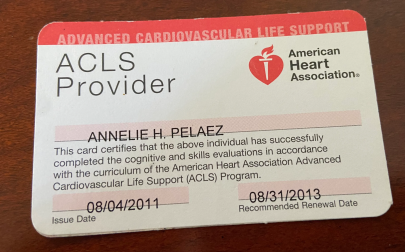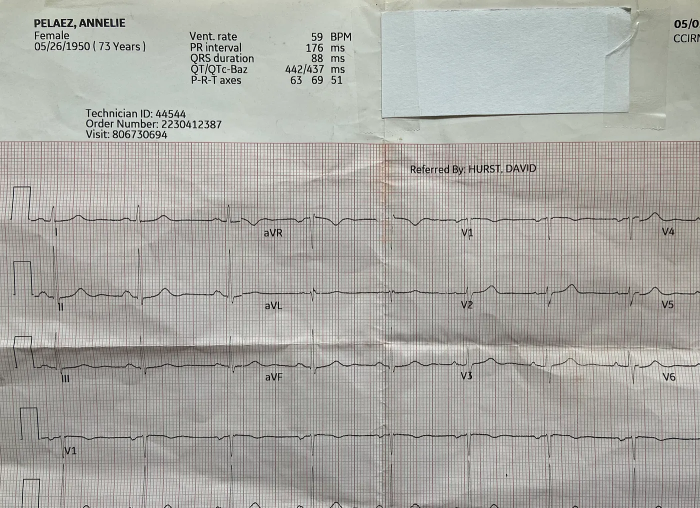The Algorithm
Tuesday, September 3, 2024
Getting to where we want to go with a better script.

Photo by Rayyu Maldives on Unsplash
An algorithm is a term used to describe a set of rules or a procedure to solve problems, create a specific outcome, or complete a task. It is commonly used in mathematics and computer science. Medium has its algorithm and so does the Google search engine. There is even an algorithm on how to be happy. Algorithms extend into just about everything in life; from making pizza to saving lives.
When the American Heart Association (AHA) came up with its first Advanced Cardiac Life Support (ACLS) algorithm in 1974, life became better for cardiac patients and caregivers alike.
Patients who were experiencing or moving towards a cardiovascular emergency event; cardiac arrest or a fatal arrhythmia, received treatment that optimized outcomes and survival rates. Caregivers learned what to do and how to do it.
Doctors, nurses, and medical providers were trained and used a set of guidelines, referred to as ACLS, to treat these life-threatening events. ACLS algorithms include multiple, simultaneous treatment recommendations like an EKG, specialized resuscitation techniques, medications, and airway management. These algorithms are based on research and evidence-based best practice to improve patients’ outcomes.
“Life has no limitations; except the ones you make.”
-Les Brown
So, what really, is an algorithm? It is a predefined procedure that solves a problem or a task, step by step. For each event or task, there is a desired outcome. An algorithm is used to reach a goal or prevent an undesirable outcome, like a plane crash. Would you want to get into an airplane where the captain did not follow a safety preflight algorithm? Of course, you would not.
Safety precautions are fundamental to survival. And so are health and happiness. Without the latter, life becomes pretty darn sad. As we grow older, creating an algorithm to improve our quality of life is a choice we have. Becoming mindful of what matters and what we want is the only prerequisite. This helps us get to where we want to go, rather than being stuck.
Age does not make us old
“You can’t help getting older, but you don’t have to get old.”
-George Burns
More often than not, we make ourselves old. The difference between a spry runner at 95 and a prime sitter at 65, is often their algorithm. Outcome; the result of our activity level influences every aspect of life. It infiltrates our body, our mind, and our spirit.
We all have goals. Our goals exist on a continuum, according to who we are and what we want. There are days when we may feel empty and hopeless. On those days, our main goal is to gather enough strength, just to get out of bed and get to a doctor’s appointment at 3 PM. On other days, we set goals to start a business to help improve the lives of millions of people with our products and services.
When we are stuck in the southbound lane
“Growth is painful. Change is painful. But nothing is as painful as staying stuck where you do nothing.”
-N.R. Narayana Murthy
Make no mistake, at times we are all rolling down the hill. At times we all land in the rabbit hole. This is what humans do. The problem is when we get stuck because we have no algorithm, no procedure, no set of rules, or no way of getting out. We hope that someone will come to save us. No one is coming. Our power lies in the ability to choose a strategy; an algorithm that produces better outcomes.
More often than not, we forget our own greatness and we forget that we deserve the best of what life has to offer. We forget how lucky we are to be six feet over and we forget how easily situations can change. Years collected, wrapped into a long life gather lessons learned and wisdom to share.
The truth is, we become better as we age. The body may falter, but it can be repaired. Thank goodness, I am getting a brand-new hip in three weeks. The mind experiences senior moments. So, what; mindfulness and a short, consistent meditation practice can help.
The algorithm that makes you healthy and happy
“You know, all that really matters is that the people you love are happy and healthy. Everything else is just sprinkles on the sundae.”
-Paul Walker
How you design your algorithm depends on who you are and what you want. Bringing awareness to what matters to you, decides how to create your very own set of rules to live by. I have designed a plan that includes preventive measures, the use of my unique abilities, and a goal for a long and happy life. It is a top priority on my daily to-do list. Stay the course, I call it.
Staying the course comes before family, friends, writing, gardening, and doing chores. A morning routine that works in my favor includes warm lemon water, green tea, a short walk outside, a short meditation practice, and journaling. This sets me up for the day.
This routine, this sequence of steps, and this algorithm help me to keep my head over the water. It helps me to stay afloat when the southbound elevator takes me down the rabbit hole. It may take a few attempts to get out, but I don’t stay stuck because I have an algorithm in place. I know what to do.
It helps me to eat better, maintain a current hip-friendly diminished activity level, and it helps me to stay positive. It inspires good thoughts, and it makes me excited to embrace my age. I hope to keep going until age 113, when my youngest grandchild turns 50. Of course, I will iterate and make alterations along the way.
Changing algorithm when outcomes change
“Your life does not get better by chance: it gets better by change.”
— Jim Rohn

An old ACLS certification card from my time of hospital nursing.
This was my second to last ACLS certification before I retired. As a critical care nurse, I took an exam and was tested on my skill set every two years.
Left over baggage, from being a high school dropout at age 17, gave me performance anxiety when I took tests. On this particular recertification day, back in august 2011, I had spent half the night studying, and I had drunk way too much coffee to.
At some point during the written exam, I happened to glance across the table. I noted that my colleague had marked a different answer to one question than I had. An overstimulated sympathetic nervous system, a caffeine bomb went off, sped through my body, and brought my heart into overdrive.
A regular sinus rhythm is considered to have a heart rate between 60–100 per minute. My heart rate is normally ticking away in the high 50s to the mid 60’s. The stress bomb shot the rate up to 130–140 per minute. This is called Supra Ventricular Tachycardia (SVT).
My own normal EKG print out from a resent doctor’s visit. Although slightly under 60, the rate is still considered normal.

I completed the ACLS written exam and followed my group to the cafeteria for lunch. Then I left without eating. My heart was pounding like a jungle drum, and I started to feel pretty anxious. It was time to walk to the Emergency Room and get checked out.
First, I tried to do a Vagal maneuver, as recommended by the ACLS algorithm. But it failed to slow down my heart rate. I was seen right away. An EKG, 25 mg of Metoprolol, and Xanax took care of business. The cardiologist called it an anxiety attack. It was caffeine and stress-induced.
I was over 60 at the time and learned to change my relationship with coffee and caffeine.
Define what you want, with a script to obtain your desired outcome
“The only real thing in life is the unexpected things. Everything else is just an illusion.”
-Watkin Tudor Jones
It is funny how our everyday life seems to be the same, day after day. Everything is the same until it isn’t. A loved one suddenly gets sick, a friend dies, or another tragedy strikes in the flash of a heartbeat.
Looking back to that ACLS certification day, in August 13 years ago, my life has changed immensely. Aging back then was only a concept that other people had to deal with. But old age does not come alone. It brings tons of little unexpected guests that we need to host, one way or another.
We must take an active role to prepare, prevent, and prevail. Life is precious. We ought to hang in the best that we can and for as long as we can. You got this, dear Boomer sisters and brothers.
Thank you.
. . .
🇳🇴Annelie Holmene Pelaez believes that everyone has an attribute to share with others. Promoting cardiovascular health and helping adults over age 65 is her contribution. When we don’t let age define us, but rather empower us to grow, we discover health and happiness are byproducts of who we are.
Annelie is the author of the book, Say Yes to A Better Life, available at Amazon.
Sign up for our newsletter and a free PDF designed specifically for Boomer Girls.





